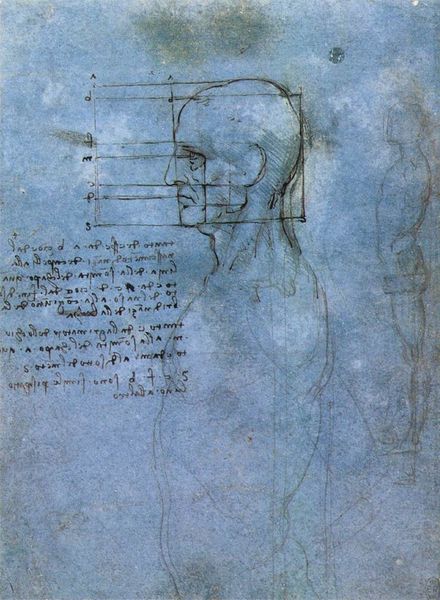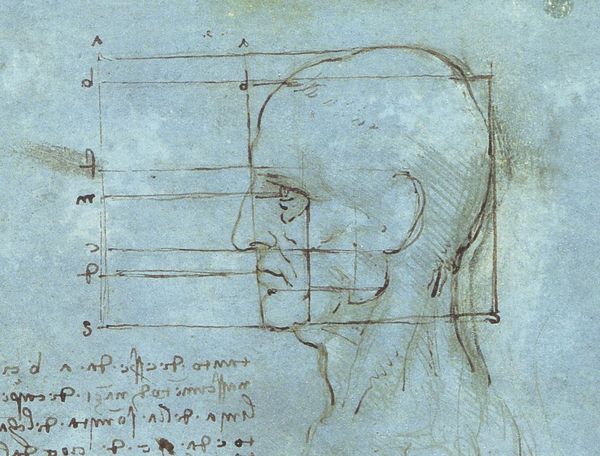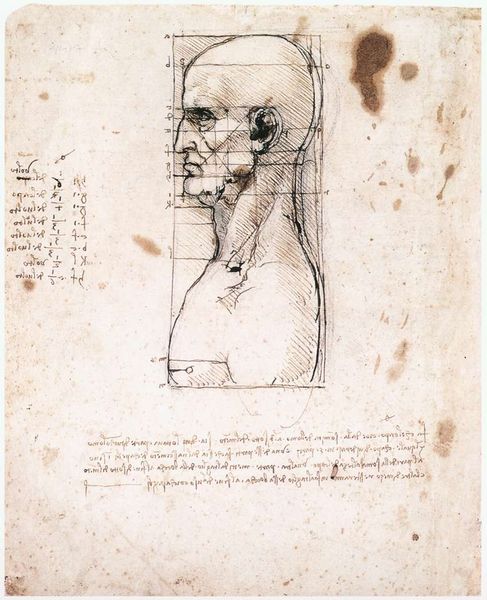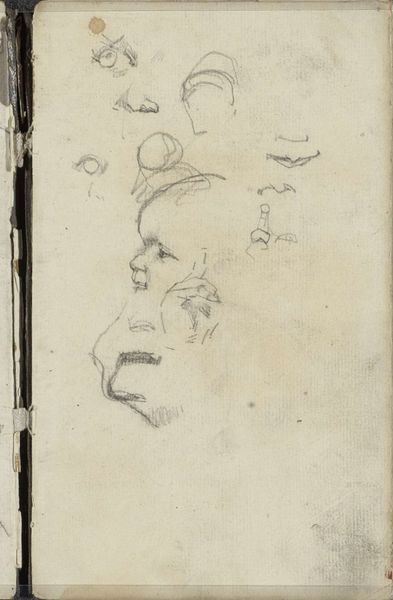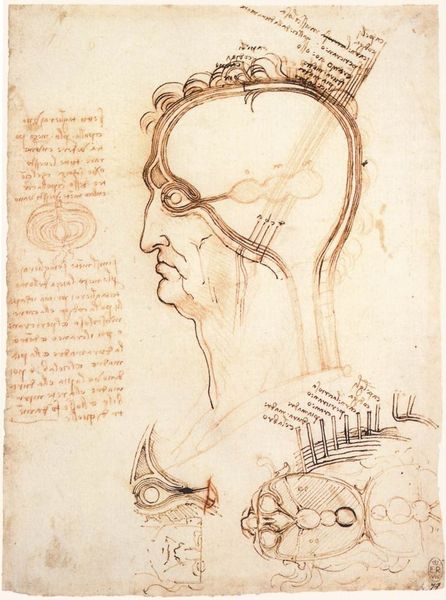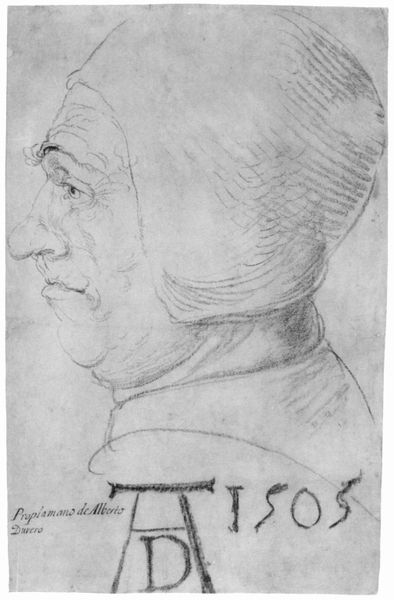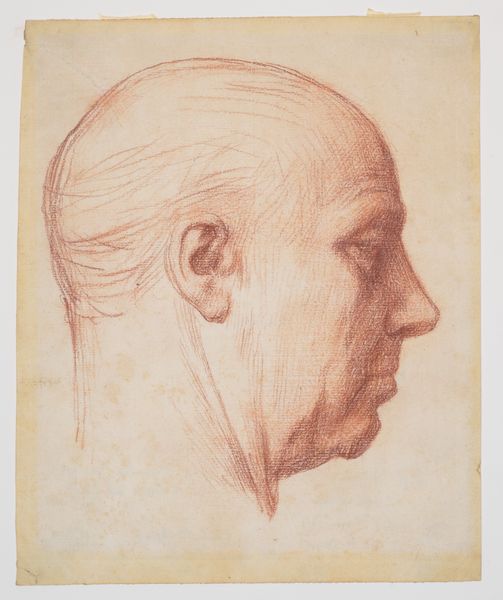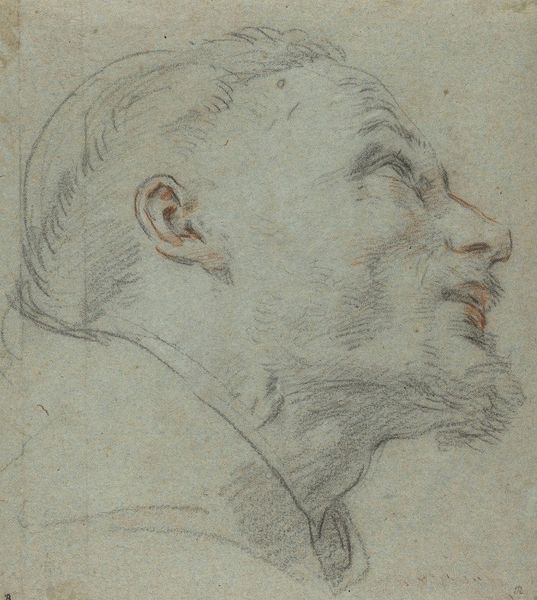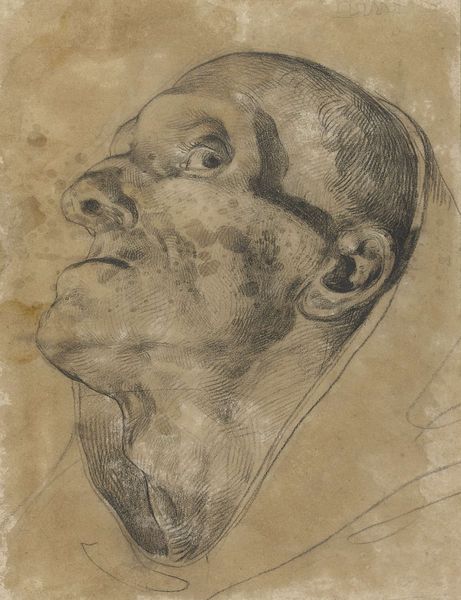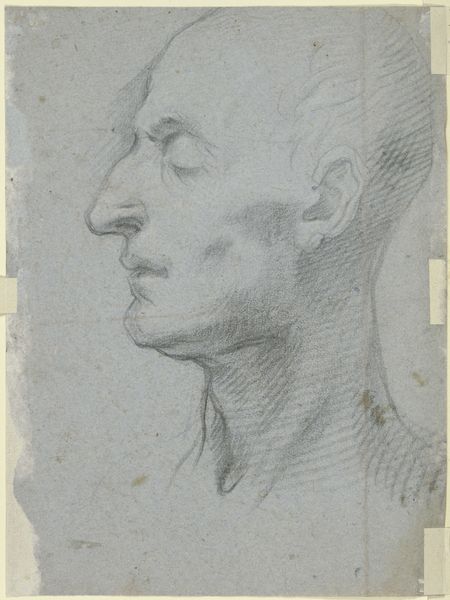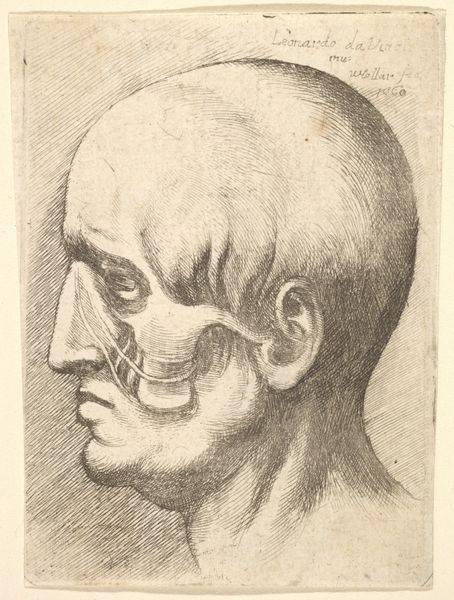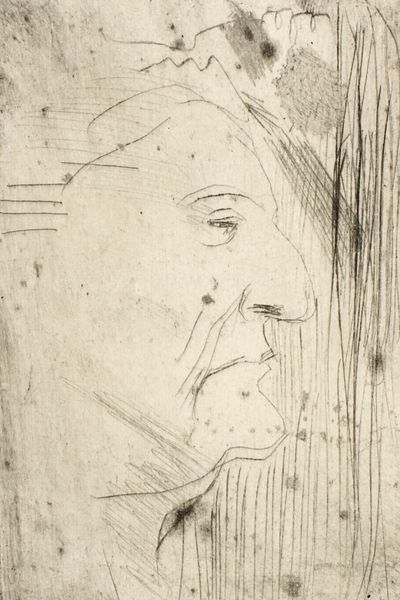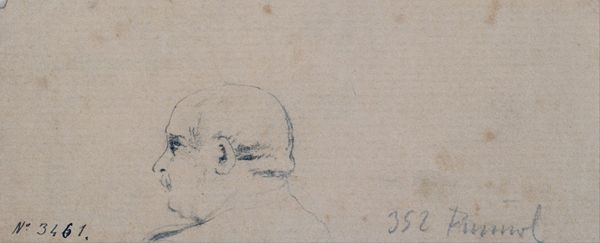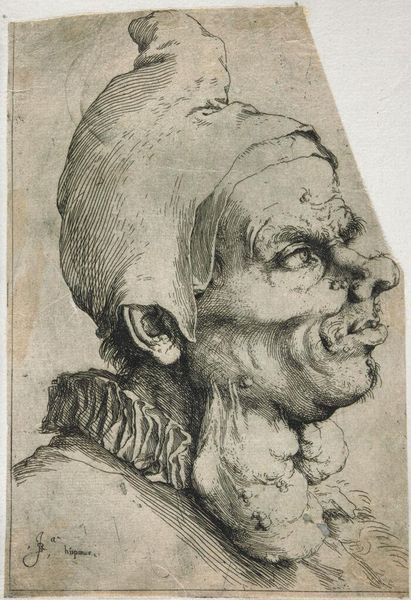
Study on the proportions of head and eyes 1500
0:00
0:00
leonardodavinci
Palazzo Reale di Torino, Turin, Italy
drawing, paper, ink
#
portrait
#
drawing
#
head
#
face
#
figuration
#
paper
#
form
#
11_renaissance
#
ink
#
sketch
#
human
#
line
#
italian-renaissance
Dimensions: 19.7 x 16 cm
Copyright: Public domain
Editor: Here we have Leonardo da Vinci’s “Study on the Proportions of Head and Eyes,” made around 1500 using ink on paper. What strikes me is how technical it feels, like a blueprint for the human face. What do you make of it? Curator: Well, let's consider the materiality. The paper itself, likely made from rags, would have been a valuable commodity. Ink, carefully prepared, too. Da Vinci wasn’t just sketching; he was investing significant resources in this study. How do you think the availability and cost of materials like these influenced artistic practices at the time? Editor: That’s a good point! It wasn't just casually doodling. The paper, ink, and time all signify intent. The visible construction lines emphasize process – we see Da Vinci actively *making* knowledge. Curator: Exactly. And the notes around the drawing – those are production notes. Leonardo is not presenting a finished product but is diagramming a system, showing the labor involved in understanding human anatomy. It begs the question, what kind of "truth" is he pursuing here? And is it separate from his way of working with the materials? Editor: I hadn’t thought of the notes that way, but you’re right. It really demystifies the artistic process. It feels less about divinely inspired talent and more about… intellectual craftsmanship? Curator: Precisely! It's about revealing the methods, making knowledge accessible rather than shrouded in mystery. Consider how this challenges our assumptions about what constitutes ‘art’ versus, say, ‘scientific inquiry’. How much is his genius based on craft, manual labor, not only aesthetic intention? Editor: I see it now. Focusing on the materials and process changes the whole interpretation. It’s not just a beautiful drawing; it’s a record of intellectual and material work. Thank you! Curator: Absolutely. Seeing the means of production exposes the artist's decisions, labor and even resources involved; inviting critical consideration.
Comments
No comments
Be the first to comment and join the conversation on the ultimate creative platform.
